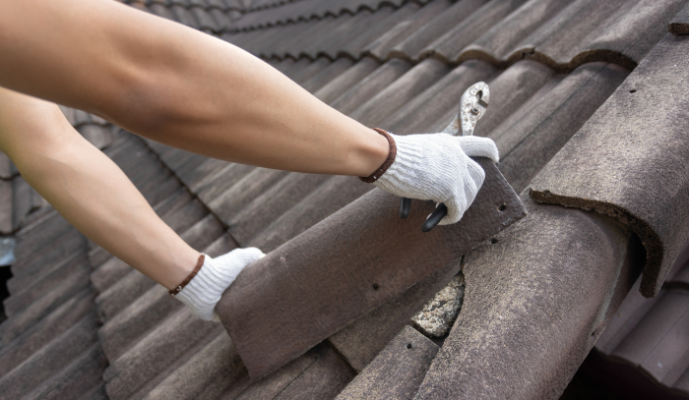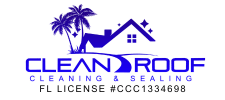Applying roof sealant is a crucial step in maintaining the longevity and integrity of your roof. However, one of the most common questions homeowners and contractors face is whether roof sealant can be applied in the rain. Understanding the intricacies of roof sealants, including the best practices and the impact of weather conditions, is essential for ensuring a successful application. In this comprehensive guide, we will delve into the specifics of applying roof sealant during wet conditions, explore the different types of roof coatings, and provide expert tips for optimal results.
Understanding Roof Sealant and Its Purpose
Roof sealant is a protective layer applied to roofing materials to prevent leaks, UV damage, and other forms of deterioration. It plays a vital role in extending the lifespan of your roof by creating a waterproof barrier. Roof sealants are available in various formulations, each designed to address specific roofing needs. Among the most popular options are silicone roof coatings, which are known for their excellent adhesion and durability.

Types of Roof Sealants
There are several types of roof sealants, each with unique properties that make them suitable for different roofing materials and conditions:
-
Silicone Roof Coating: Renowned for its UV resistance and flexibility, silicone roof coating is ideal for roofs exposed to harsh weather conditions and extreme temperatures. It offers excellent adhesion and can withstand ponding water, making it a top choice for flat roofs.
-
Acrylic Roof Coating: This type of roof sealant is water-based and easy to apply. It is suitable for a variety of roofing materials and provides good UV protection. However, it is less effective in areas with frequent ponding water.
-
Polyurethane Roof Coating: Known for its durability and resistance to impact, polyurethane coatings are ideal for roofs subjected to heavy foot traffic. They offer good UV protection but may require more preparation work compared to other sealants.
-
Asphalt Roof Coating: Commonly used for built-up roofs and asphalt shingles, this sealant offers waterproofing and UV protection. It is a cost-effective option but may not last as long as other types of roof sealants.
Can Roof Sealant Be Applied in the Rain?
Applying roof sealant in the rain is generally not recommended. The primary reason is that moisture can interfere with the adhesion process, compromising the sealant’s ability to form a waterproof barrier. When the surface of the roof is wet, the sealant may not adhere properly, leading to potential leaks and water damage.
Challenges of Applying Roof Sealant in Wet Conditions
-
Poor Adhesion: Wet surfaces prevent roof sealants from bonding effectively. This can result in peeling, cracking, or blistering of the sealant layer.
-
Incomplete Curing: Most roof sealants require dry conditions to cure properly. Rain can wash away uncured sealant, leading to uneven coverage and weak spots.
-
Contamination: Rainwater can carry dirt and debris onto the roof’s surface, contaminating the sealant and reducing its effectiveness.
Best Practices for Applying Roof Sealant
To ensure a successful application, it is essential to wait for dry weather conditions. Here are some tips for applying roof sealant effectively:
-
Check the Weather Forecast: Before starting any roof sealant project, ensure that the weather forecast predicts dry conditions for at least 24-48 hours.
-
Prepare the Surface: Clean the roof thoroughly to remove any dirt, debris, or old sealant. Using mineral spirits can help achieve a clean, dry surface.
-
Use Proper Tools: Apply the sealant using caulk tubes or a high-quality brush to ensure even coverage.
-
Follow Manufacturer Instructions: Each type of roof sealant comes with specific application guidelines. Adhering to these instructions will maximize the sealant’s performance.
Silicone Roof Coating: A Top Choice for Durability
Silicone roof coatings are highly regarded for their durability and versatility. They provide superior UV resistance, which helps protect the roof from the damaging effects of UV rays. Additionally, silicone coatings remain flexible even in extreme temperatures, preventing cracking and maintaining a strong bond with the roofing material.
Benefits of Silicone Roof Coatings
-
UV Resistant: Silicone coatings offer excellent protection against UV rays, reducing the risk of premature aging and degradation.
-
Waterproof: These coatings create a seamless, waterproof barrier that prevents leaks and water damage.
-
Flexibility: Silicone roof coatings can expand and contract with temperature changes, maintaining their integrity and preventing cracks.
-
Longevity: When applied correctly, silicone coatings can last up to 20 years, making them a cost-effective solution for long-term roof protection.
Preparing Your Roof for Sealant Application
Proper preparation is crucial for the success of any roof sealant project. Here are some steps to ensure your roof is ready for sealant application:
Inspect the Roof
Conduct a thorough inspection of the roof to identify any areas that require repair. Look for small cracks, leaks, or damaged shingles that need to be addressed before applying the sealant.
Clean the Surface
Remove any dirt, debris, and old sealant from the roof’s surface. Use a pressure washer or a brush to clean the roof thoroughly. For stubborn stains or residues, mineral spirits can be used to achieve a clean surface.
Repair Damaged Areas
Repair any damaged areas of the roof, such as small cracks or holes, before applying the sealant. This will ensure a smooth and even application, enhancing the sealant’s performance.
The Impact of Weather Conditions on Roof Sealant
Weather conditions play a significant role in the effectiveness of roof sealant application. Applying sealant in harsh weather conditions, such as rain, extreme temperatures, or high humidity, can compromise the sealant’s performance.
Ideal Weather Conditions for Sealant Application
-
Dry Weather: Ensure that the roof surface is completely dry before applying the sealant. Moisture can interfere with adhesion and curing.
-
Moderate Temperatures: Apply the sealant when temperatures are between 50°F and 90°F (10°C to 32°C) for optimal results.
-
Low Humidity: High humidity can affect the curing process of the sealant. Choose a day with low humidity for application.
The Risks of Applying Sealant in Adverse Conditions
Applying roof sealant in adverse weather conditions can lead to several issues, including poor adhesion, incomplete curing, and reduced longevity. It is essential to plan the application during favorable weather to ensure the sealant performs as expected.
Conclusion: The Importance of Timing and Preparation
Applying roof sealant is a critical step in maintaining the integrity and longevity of your roof. While it may be tempting to apply sealant during the rain to address immediate leaks, doing so can lead to more significant issues down the line. Waiting for dry weather and properly preparing the roof surface are essential steps to ensure a successful application. By following best practices and choosing high-quality sealants like silicone roof coatings, you can protect your roof from leaks, UV damage, and other forms of deterioration.
Clean Roof: Your Partner in Roof Maintenance
At Clean Roof, we understand the importance of maintaining a clean and well-protected roof. Our roofing cleaning services are designed to keep your roof in optimal condition, preventing the buildup of dirt and debris that can compromise the effectiveness of your roof sealant. Contact us today to learn more about our comprehensive roof cleaning and maintenance services.

